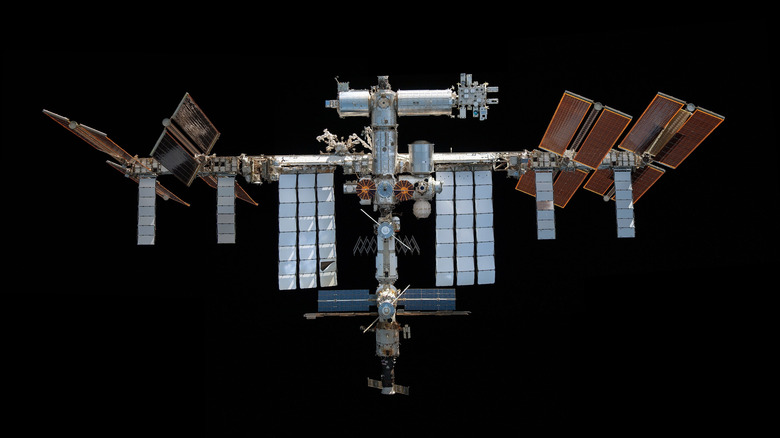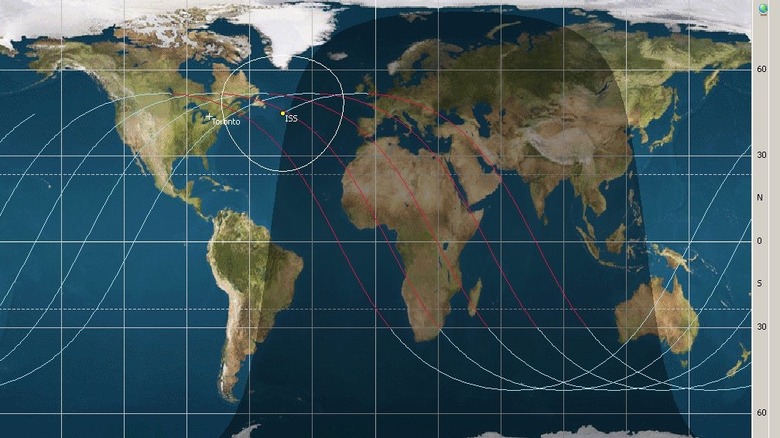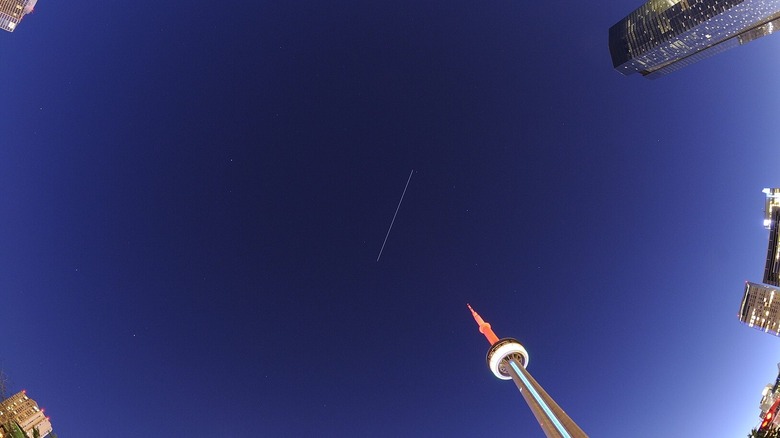What Happens To The International Space Station Every 90 Minutes?
According to NASA, the International Space Station makes one complete revolution around Earth every 90 minutes. It does this by moving at five miles per second, or 17,000 mph. That's so fast that the ISS orbits Earth 16 times a day, and the crew will see 16 sunrises and sunsets. In the span of an Earth day, the ISS will travel a distance about the same as going from Earth to the Moon and back.
The ISS is not only fast, it's huge compared to everything else humans have put into space. While the Hubble Telescope is roughly the size of a school bus, the ISS can be put in terms of a football field. NASA says the end-to-end length of the ISS is 356 feet, or three feet shy of a football field in the U.S., including end zones, but the pressurized section is about the size of a Boeing 747 cabin. The whole station has a mass of 925,335 pounds.
All of this moves in orbit, and sometimes, it has to change orbits. The ISS circles the Earth in an orbit that is somewhere between 200-250 nautical miles above the Earth's surface. The figure changes because the orbit is not a perfect circle. The ISS is not in a powered orbit and doesn't have rockets constantly firing to keep it in orbit, so the ISS is slowly falling toward Earth and occasionally needs a boost to maintain its orbit.
Does the ISS always fly over the same places?
The ISS also has to change orbits because of the risk of collision. NASA estimates that there are 19,000 man-made objects in Earth orbit that are 2 inches in size or larger. This can include currently operating spacecraft, but most of the objects are either old satellites or rocket stages, or pieces of them. In 2022, the ISS needed to make emergency maneuvers because of a potential collision with pieces from a 2021 Russian anti-satellite experiment that blew up a satellite and left thousands of pieces in orbit.
The space station does not fly over one place or one set of places. Its orbit is inclined at 51.5 degrees compared to the Equator, so instead of orbiting parallel to the Equator, it crosses it at a 55-degree angle. Because of its orbit, the ISS is over different parts of the world at the same latitude at different times. The inclination of the orbit stays at the same 51.6 degrees, an angle chosen to account for the efficiency of launches from Baikonur Spaceport in Kazakhstan, as well as greater coverage over the planet than the typical 28-degree launches from Kennedy Space Center.
Can you see the ISS where you live?
Depending on several factors, you can see the ISS with your eyes. That requires knowing when and where to look, as well as some luck with the weather and how bright it is, both in terms of the Moon and where you're at. With binoculars or a telescope, your chances increase greatly. There are sites on the Internet where you can plug in your location and see when and in what part of the sky you can see the ISS. Even with all the right information and tools, though, it's still a challenge.
For next-level viewing, there are ISS transits when the ISS can be seen traveling across the disk of the Sun or Moon. These are best done with cameras or optical feeds, though, as the transits are short-lived, and the Sun is dangerous enough that you'll need a well-filtered telescope and excellent timing to catch the image. The ISS is too small to be seen against such a backdrop.


